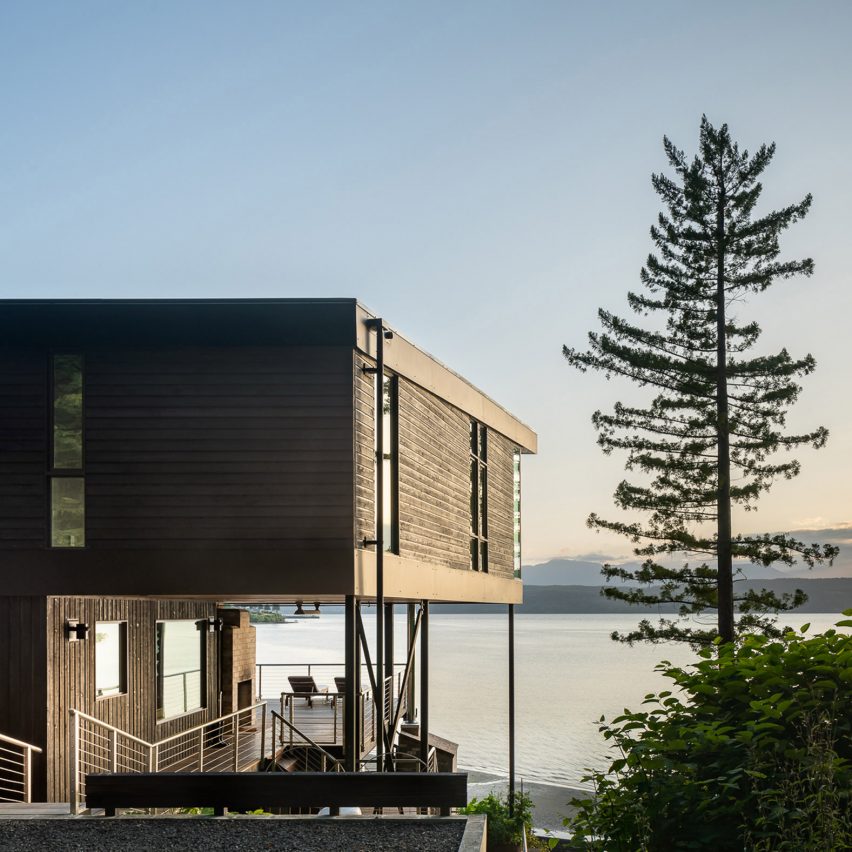
Seattle studio Wittman Estes has designed two elevated wings to open up and extend a beach house from the 1940s in Hood Canal, Washington.
The extension to Aldo Beach House was created for a couple who owned the original cabin and wanted to turn it into a permanent home with more room for the family.
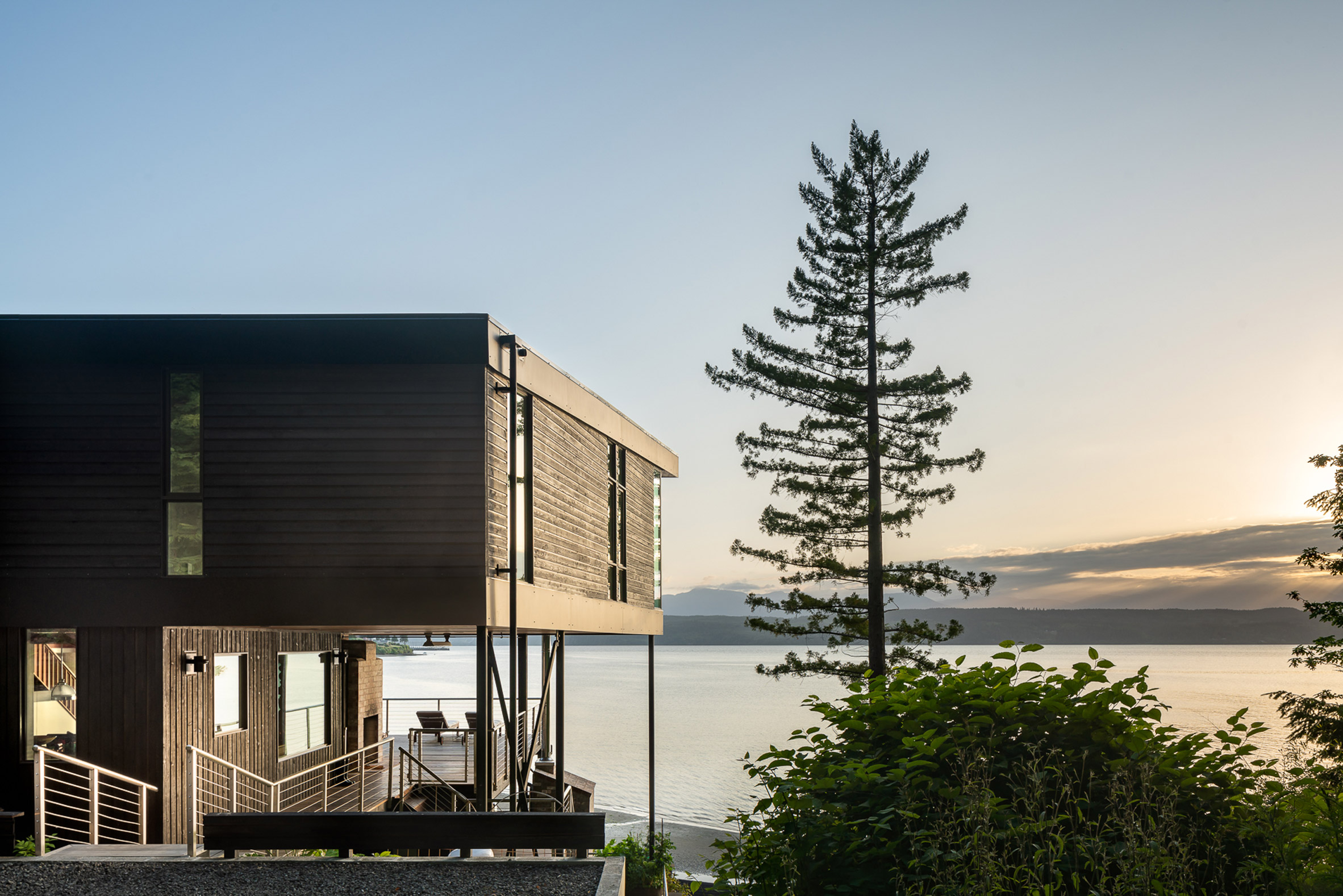
Wittman Estes, which has worked on a number of sites with delicate ecologies and near the shoreline, was asked to double the square footage of the house without disturbing the ground.
The house is located on the shore of the Hood Canal fjord, one of the main basins of Washington's Puget Sound.
The studio used pin piles and thin steel columns to lift two new extensions aboveground, maximising the footprint of the house while also protecting the fragile shoreline.
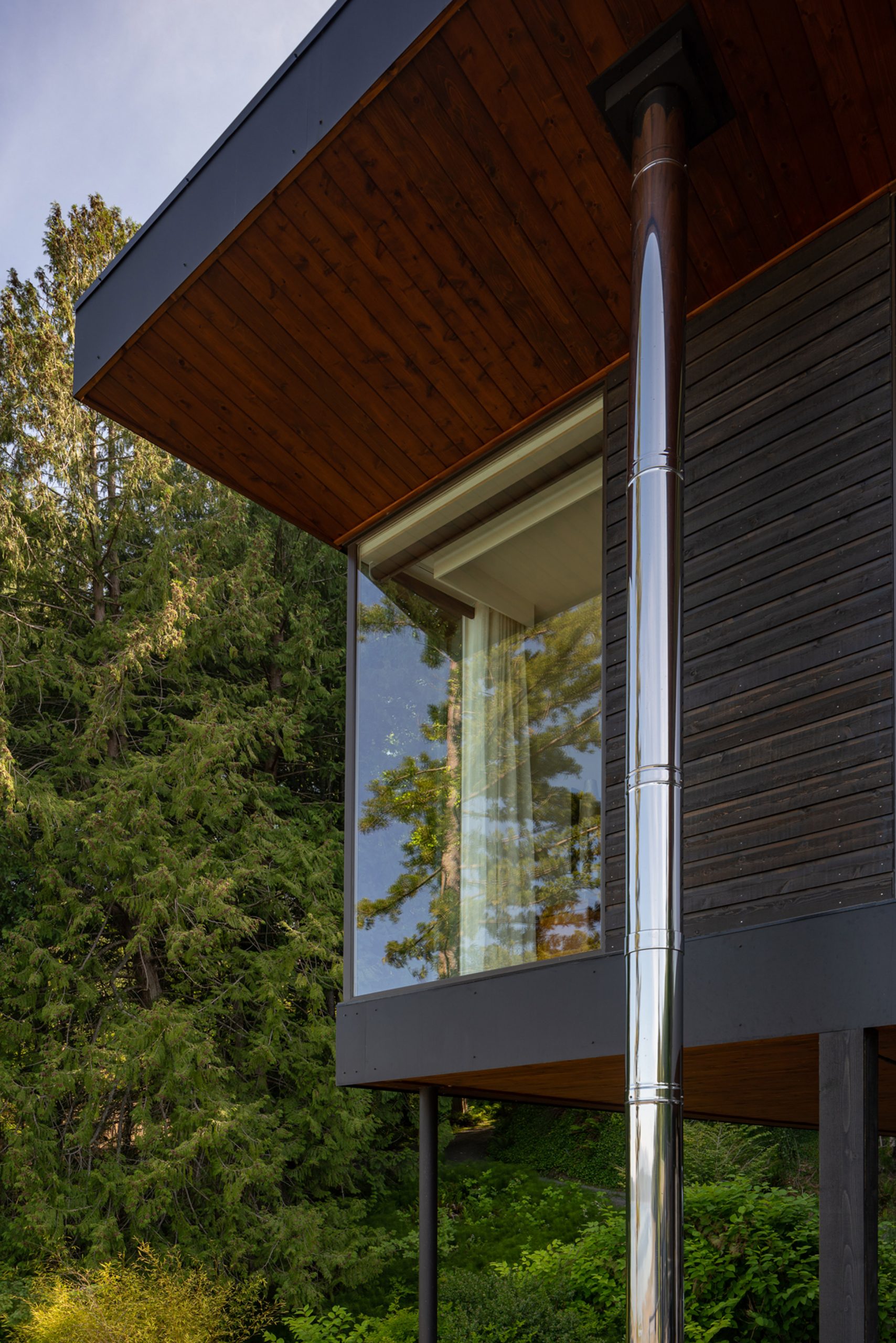
"Pinned by the shoreline on the west, and a steep slope on east, the site only had room for expansion to the north and south," Wittman Estes founding principal Matt Wittman told Dezeen.
"We discovered the original cabin was built rotated from the side property lines," he added. "This gave the north and south projecting wings sculptural triangular shapes, which resulted from expanding the building out to the side setbacks."
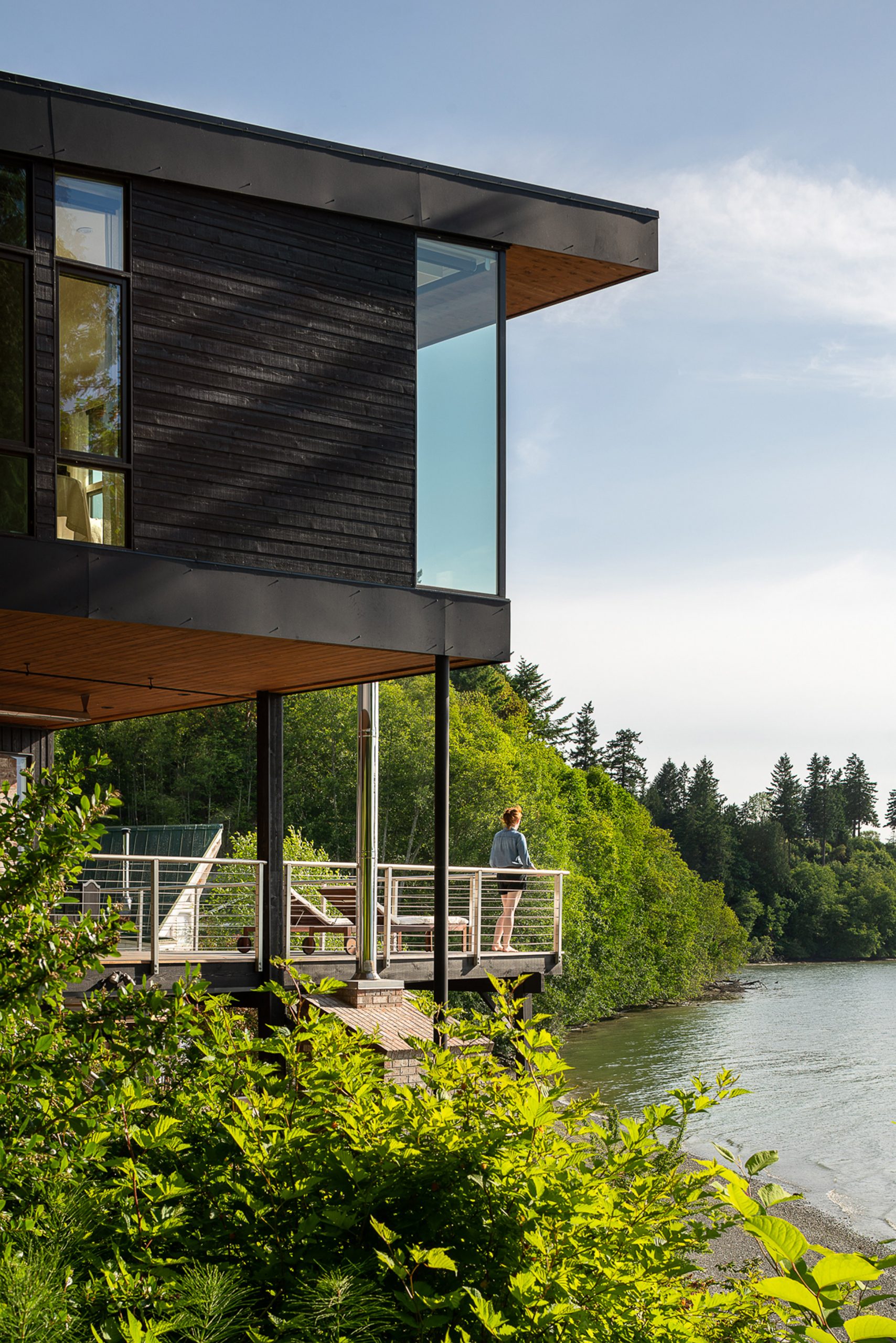
The extensions, which doubled the liveable area of the house, are elevated above the hillside on one side of the house and over the beach on the other.
"Often pin piles and steel columns are the best engineering solution to reduce concrete, touch the ground lightly, and make architecture in tune with the natural environment," Wittman said.
Wittman Estes also removed the house's original roof gable and replaced it with a new shed roof.
The studio reused much of the existing cabin materials and chose a high-efficiency air source heat pump heating and cooling system, together with passive ventilation, to make the structure more energy efficient.
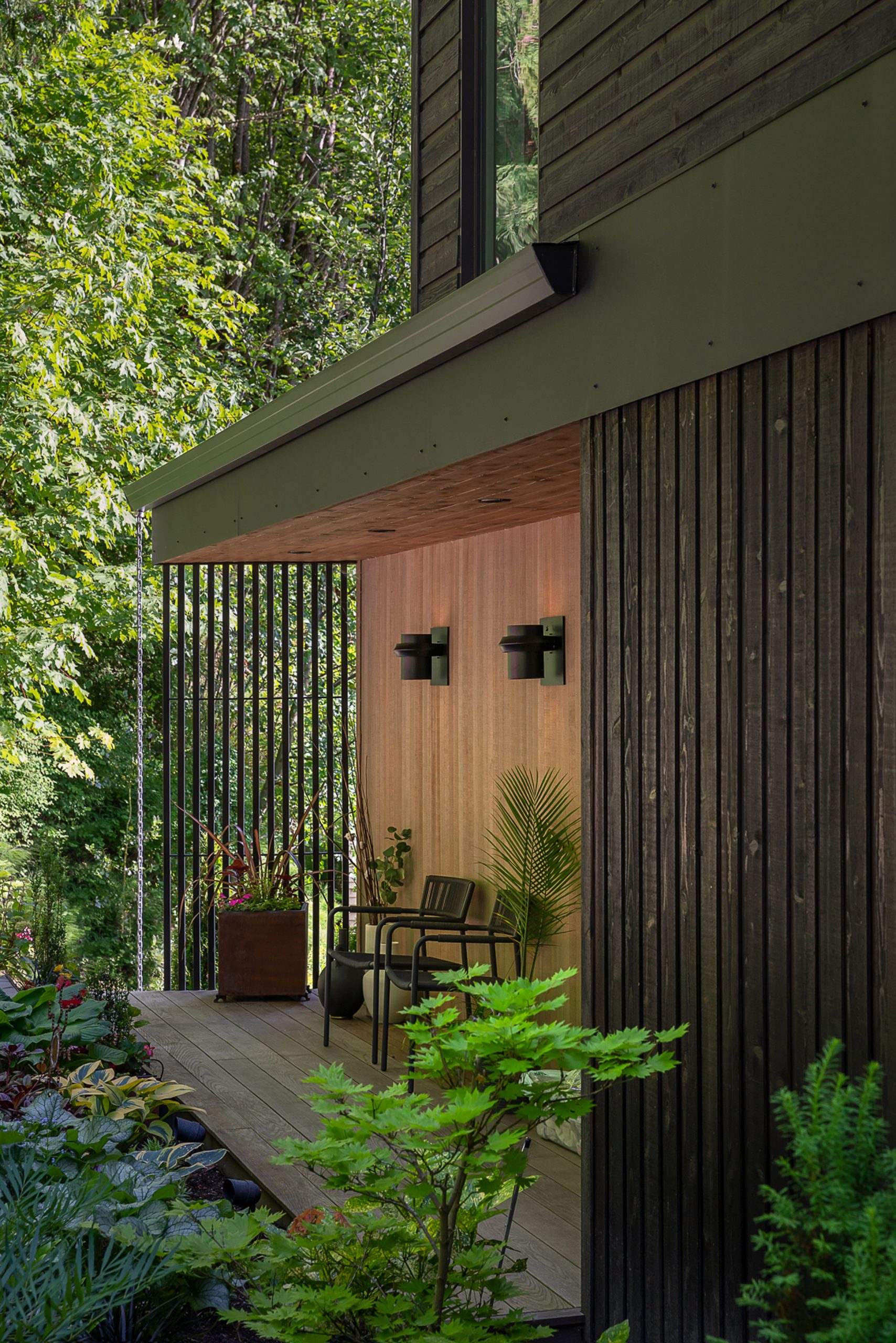
The main building material for Aldo Beach House was locally sourced fir and cedar wood suitable for the Northwestern climate.
The interior ceiling and the exterior of the house are clad in cedar, which wears naturally with the seasons, while interior floors are reclaimed pine and fir flooring, and windows are fir.
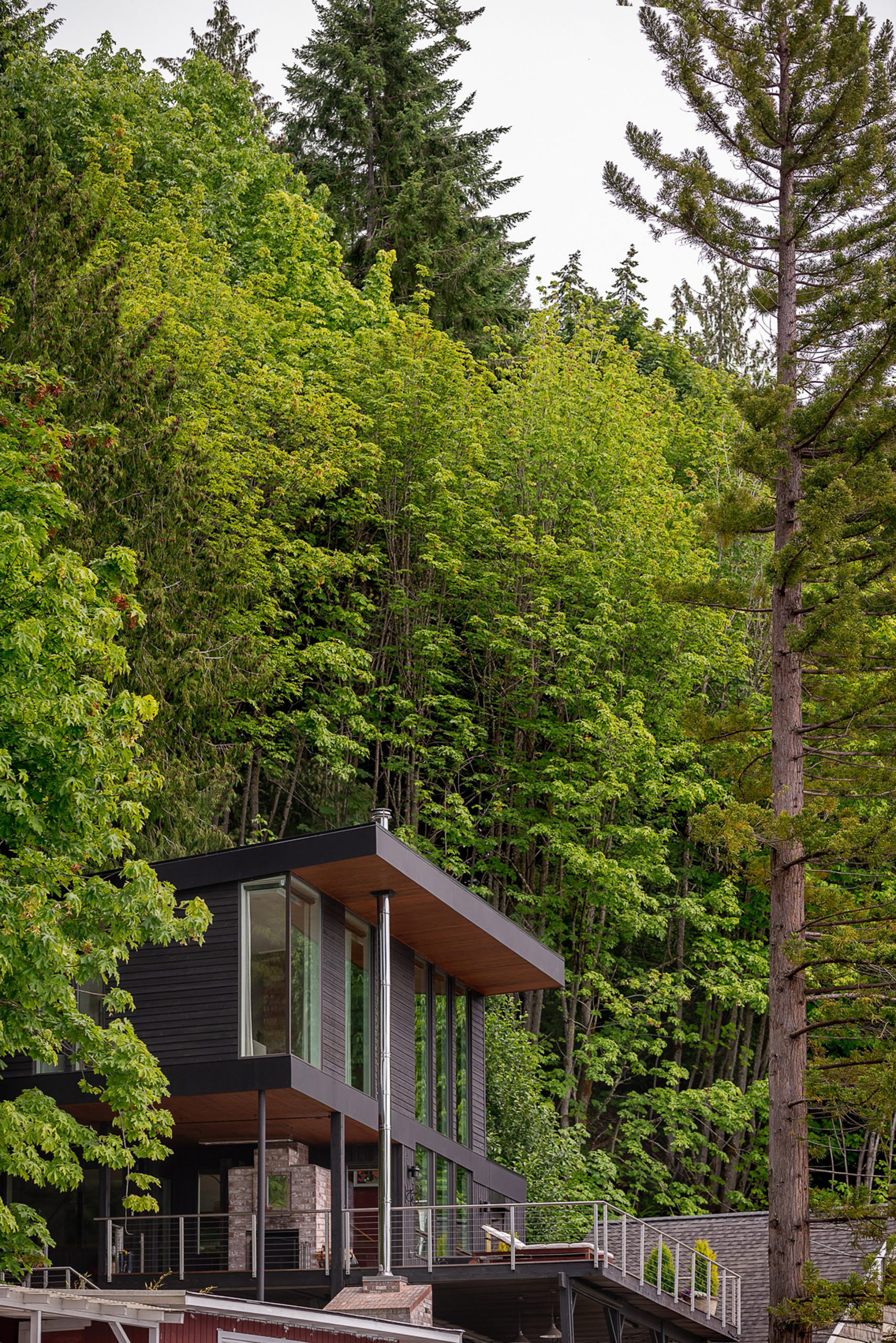
Guestrooms, a bunk room and play area for kids, and an outdoor kitchen and deck were added to the house in the new wings, which also opened the house up more to the surrounding nature.
"The south guest wing extension opens onto the west facing terrace, encouraging guests to come outdoors," Wittman said.
"The north main bedroom wing hovers over the site, opening up views to the trees, eagles and osprey, and to the Hood Canal and Olympic Mountains beyond."
Among Wittman Estes' previous projects are the renovation of a 1960s home in the Pacific Northwest and a holiday for a family of naturalists.
Photography is by Andrew Pogue.
Project credits:
Architect: Wittman Estes
Design team: Matt Wittman AIA LEED AP, Jody Estes, Ashton Wesley
Structural engineer: J Welch
Engineering LLC builder: Jack Colgrove Construction
The post Wittman Estes elevates extensions to 1940s beach house appeared first on Dezeen.
from Dezeen https://ift.tt/36jzlbs

No comments:
Post a Comment